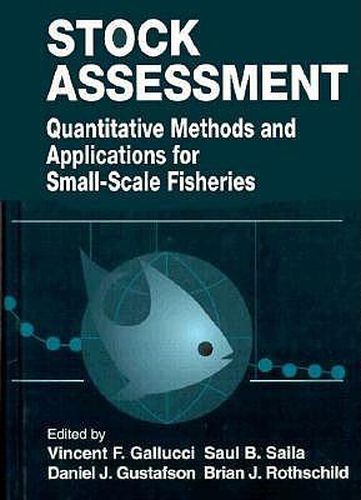Readings Newsletter
Become a Readings Member to make your shopping experience even easier.
Sign in or sign up for free!
You’re not far away from qualifying for FREE standard shipping within Australia
You’ve qualified for FREE standard shipping within Australia
The cart is loading…






Stock Assessment: Quantitative Methods and Applications for Small Scale Fisheries is a book about stock assessment as it is practiced. It focuses on applications for small scale or artisanal fisheries in developing countries, however it is not limited in applicability to tropical waters and should also be considered a resource for students of temperate fishery management problems. It incorporates a careful sample design, various mathematical models as a basis for predicting consequences for stock exploitation, and discusses the impact of exploitation on non-targeted species. This was a unique concept involving a collaborative effort between U.S. and host country scientists to address issues of regional and global concern through innovative research. Unlike other books on stock assessment that show mathematical models, this is the only book of its kind that discusses how an assessment is carried out. It looks at the field as a whole and includes sampling, age determination and acoustics. The book represents the culmination of a nine-year program financed by the United States Agency for International Development to provide new or improved methods of stock assessment for artisanal fisheries.
$9.00 standard shipping within Australia
FREE standard shipping within Australia for orders over $100.00
Express & International shipping calculated at checkout
Stock Assessment: Quantitative Methods and Applications for Small Scale Fisheries is a book about stock assessment as it is practiced. It focuses on applications for small scale or artisanal fisheries in developing countries, however it is not limited in applicability to tropical waters and should also be considered a resource for students of temperate fishery management problems. It incorporates a careful sample design, various mathematical models as a basis for predicting consequences for stock exploitation, and discusses the impact of exploitation on non-targeted species. This was a unique concept involving a collaborative effort between U.S. and host country scientists to address issues of regional and global concern through innovative research. Unlike other books on stock assessment that show mathematical models, this is the only book of its kind that discusses how an assessment is carried out. It looks at the field as a whole and includes sampling, age determination and acoustics. The book represents the culmination of a nine-year program financed by the United States Agency for International Development to provide new or improved methods of stock assessment for artisanal fisheries.